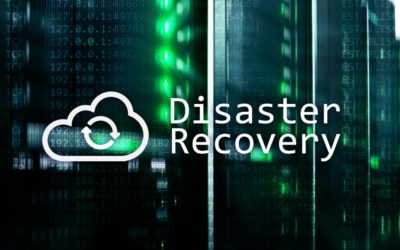Many organizations have annual disaster recovery (DR) test requirements, whether to run production operations from a secondary facility for several days or test the functionality of systems and applications running in a DR facility while production workloads run as usual. Every business should have a disaster recovery plan and perform a DR test, especially with recent virus and ransomware activity.
In the past, disaster recovery was much more complex. However, virtualization and cloud technologies significantly improved DR capabilities and the ability to run workloads in separate or multiple locations. While advantageous, it is crucial to check the functionality of systems, processes, and people resources.
How often should I perform a disaster recovery test?
Your business needs and requirements will determine the testing frequency, but an annual test is usually sufficient for many. It is essential to schedule the test well in advance, especially if it involves a third party. Finding time for all parties as the end of the year approaches will be difficult. If you make significant infrastructure or application changes, it may be worth performing an additional test.
What are the goals of a disaster recovery test?
While you may think the goals of a DR test are obvious, setting objectives helps keep tasks in scope and focused. Implementing a disaster recovery testing plan helps. You want to verify connectivity and application functionality and ensure you have the appropriate users available to assist. Believe it or not, running into problems during your DR test can be a good thing so you can resolve the issues. You do not want to encounter issues during an actual emergency!
Some issues we have discovered while performing DR tests for customers:
- Old, unsupported, or end-of-life operating systems
- Unsupported operating systems that are too new (beta, just released)
- Old versions of virtual machines and hypervisors
- Unpatched servers take a long time to bring up, as they apply patches automatically. (Note: Be sure to follow regular patching practices.)
- Incomplete networking documentation
Disasters can happen at any time. Performing a disaster recovery test allows organizations to prepare ahead of a crisis and remediate issues before a disaster occurs. In addition to applications and systems testing, tests will enable you to fine-tune call trees, identify application owners and stakeholders, and understand the process of turning on DR workloads.
More Disaster Recovery Articles
GDV Veeam Experts Become Extensions of your IT Team
Who can you call in a crisis? Creating and maintaining a disaster recovery plan are necessary items for any business. Companies often overlook the “crisis” part of a crisis—potential lack of resources, added pressure, possible media exposure—that could prevent or...
How to Create a Disaster Recovery Plan
Business Continuity vs. Disaster Recovery While similar in nature and often confused, business continuity planning and disaster recovery planning are two distinctly different activities, and yet entwined. Disaster recovery is a significant component of continuity...
Insider Threat Defined
Businesses face all types of pressure in today’s marketplace. One of the most devastating is a data loss event that can destroy a company within seconds. Malware threats are increasing at a dizzying pace, and all types of insider threats are taking the stage as the...
Disaster Recovery Case Study
What could be more critical than getting First Responder communications back online on a busy Friday night? This was a critical situation for a local municipality. In this disaster recovery case study, hear Brian Childers, president of Comport Consulting share his...




0 Comments